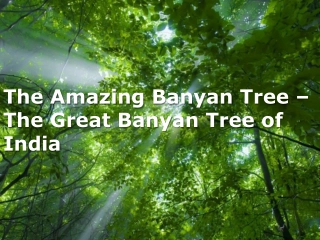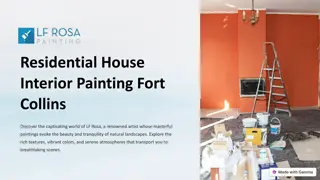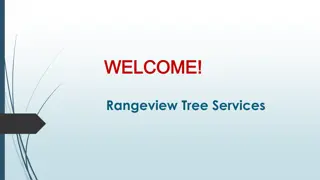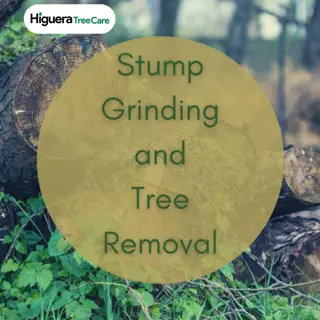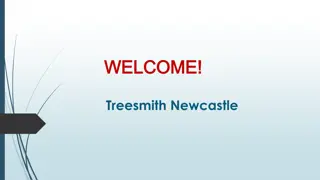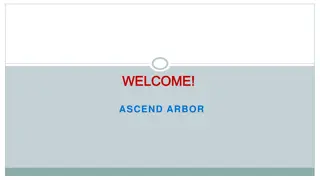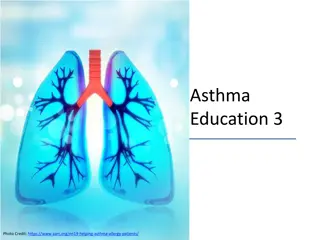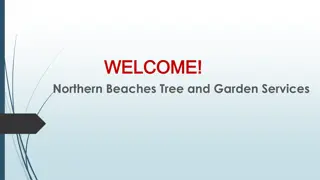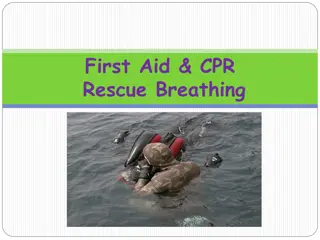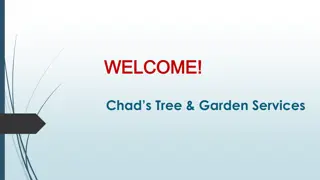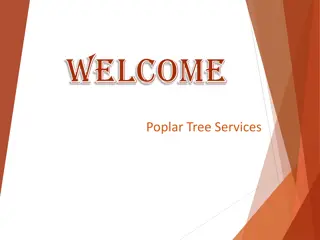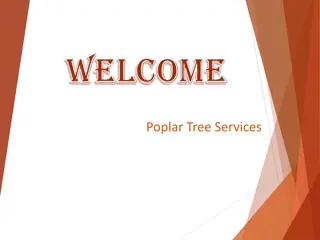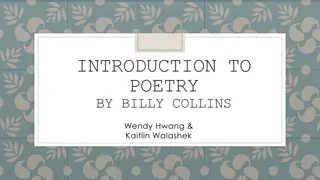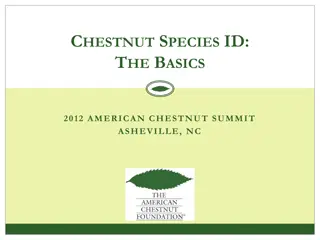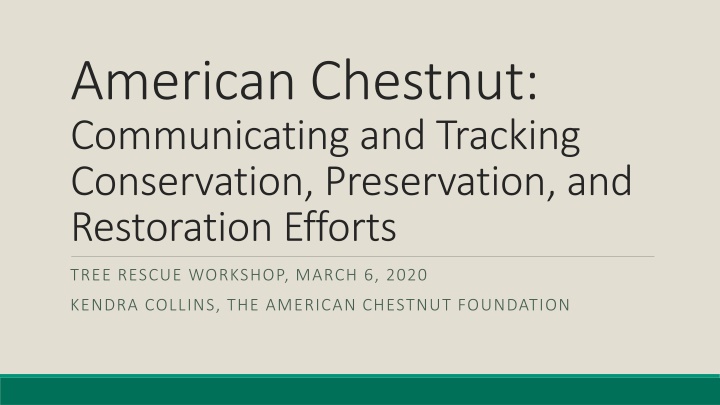
American Chestnut Conservation and Restoration Efforts Overview
Explore the timeline of American Chestnut conservation efforts, from the devastating impact of Chestnut blight in the late 1800s to current restoration projects led by organizations like The American Chestnut Foundation. Learn about tracking methods, communication strategies, and collaborative initiatives driving the preservation of this iconic species.
Download Presentation

Please find below an Image/Link to download the presentation.
The content on the website is provided AS IS for your information and personal use only. It may not be sold, licensed, or shared on other websites without obtaining consent from the author. If you encounter any issues during the download, it is possible that the publisher has removed the file from their server.
You are allowed to download the files provided on this website for personal or commercial use, subject to the condition that they are used lawfully. All files are the property of their respective owners.
The content on the website is provided AS IS for your information and personal use only. It may not be sold, licensed, or shared on other websites without obtaining consent from the author.
E N D
Presentation Transcript
American Chestnut: Communicating and Tracking Conservation, Preservation, and Restoration Efforts TREE RESCUE WORKSHOP, MARCH 6, 2020 KENDRA COLLINS, THE AMERICAN CHESTNUT FOUNDATION
Questions: 1.) How are conservation, preservation and/or restoration efforts and outcomes tracked or monitored for your species? 2.) How are efforts and outcomes communicated with colleagues and stakeholders? 3.) What s your vision for tracking and communication into the future?
Timeline Late 1800 s: Chestnut blight, Cryphonectria parasitica, imported to the eastern US 1904: Chestnut blight identified as a new pathogen 1912: Plant Quarantine Act passed 1912-1914: PA Blight Commission 1937 1960-ish: USDA chestnut breeding program 1930/1950 current: CT Agricultural Experiment Station chestnut breeding program 1982 current: USDA CSREES Northeast Regional Projects - Chestnut 1983 current: The American Chestnut Foundation breeding and science programs 1990 current: SUNY-ESF American Chestnut Research & Restoration Project
Primary Organizers USDA CSREES NORTHEAST REGIONAL PROJECTS - CHESTNUT THE AMERICAN CHESTNUT FOUNDATION Member-based organization NE140: Biological Improvement of Chestnut and Management of the Chestnut Pathogens and Pests (1982-2003) Staffed research farm Regional science staff Volunteer state chapters Citizen science participation in: Species identification, reporting and tracking Germplasm conservation Breeding for resistance Reintroduction trials Education and outreach NE1015: Biological Improvement, Habitat Restoration, and Horticultural Development of Chestnut by Management of Populations, Pathogens, and Pests (2003-2008) NE1033/1333/1833: Biological Improvement of Chestnut through Technologies that Address Management of the Species, its Pathogens and Pests (2008-2023) Collaborators and Partners Federal, State, local, University/College Small external grants program
1.) How are conservation, preservation and/or restoration efforts and outcomes tracked or monitored for your species? TACF Science Program: 3BUR Breeding wild trees, crosses, grafting, plantings, seed/seedling distributions Biocontrol application on wild or planted trees Breeding Biotech tissue culture and other asexual propagation, plantings, transgenic event status Restoration United for Biocontrol Biotech Restoration partner/collaborator research and reintroduction plantings
1.) How are conservation, preservation and/or restoration efforts and outcomes tracked or monitored for your species? Tracking Requirements Consolidated system to house current and historic research farm, regional, and chapter data Improved capacity for and efficiency of program-wide analyses Accessibility for staff scientists, collaborators, and citizen scientists Accessibility without special software or expensive licensing Tiered-access to ensure data integrity and confidentiality Tracking and mapping for federal permit requirements Capacity to access or record science program data from the field or really, anywhere Easy reporting of wild trees
1.) How are conservation, preservation and/or restoration efforts and outcomes tracked or monitored for your species? Tracking Tools dentataBASE TreeSnap Web-based relational database with tiered and customizable access Smartphone app for tracking location and condition of threatened tree species Clearinghouse for all TACF program data: Planting Breeding Asexual propagation Current species include: American chestnut Ash Hemlock White oak American elm Florida torreya Eastern larch o Tanoak o Pacific madrone o Oregon ash Tissue culture o Other Grafting Wild Trees Observations Contacts
1.) How are conservation, preservation and/or restoration efforts and outcomes tracked or monitored for your species? Integration of Tracking Tools dentataBASE TreeSnap Staff scientists handle regional data curation Anyone can record the location and health status of a wild American chestnut Trained volunteers and collaborators enter data specific to their projects Partnership with developers = admin access to chestnut data to download a/o help curate Volunteers with read-only access can see important information about their programs We still require a leaf and twig sample to confirm ID before entering any trees into dentataBase Can be accessed from smart device Data sheets are all .csv and can be downloaded ahead of field work
2.) How are efforts and outcomes communicated with colleagues and stakeholders? Communicating with Stakeholders USDA CSREES NORTHEAST REGIONAL PROJECTS - CHESTNUT THE AMERICAN CHESTNUT FOUNDATION Annual meeting Website and social media eSpout eNewsletter (open to all) Website Chestnut magazine (member benefit) Detailed meeting notes Annual meeting, board and committee meetings, regional meetings Research station reports Peer-reviewed publications Webinars and workshops Participant in International Chestnut Congress Every four years; hosted in North America, Europe and Asia Contributed and invited talks Communications and regional staff, volunteer network External grant reports
3.) Whats your vision for tracking and communication into the future? Future Tracking and Communication Tracking: dentataBase Improved usability and functionality to support broader use by volunteers, partners, and collaborators Improved use from a smart device Better integration of TreeSnap data, possibly other tree tracking apps as well (iNaturalist?) Explore use for other programs/species Communication: Continue to maintain and expand professional partner/collaborator network Expand web-based lectures, trainings, and workshops; video offerings Streamline communication and training within volunteer state chapters

